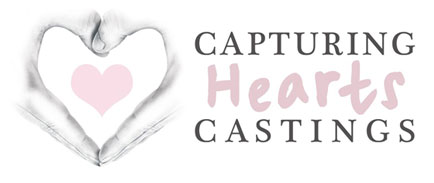Casting Materials
Are you curious as to what casting materials are used to take moulds for a Body Casting?
At Capturing Hearts Castings, we use alginate. This natural substance is made from brown seaweed and is incredibly fast-setting. A hypoallergenic, biodegradable, and non-toxic material which makes for both a safe-choice for human-use and environmental-impact.
This casting material is used in many different industries, due to it’s valuable qualities and versatile nature. Industries such as the pharmaceutical, dental, textile, food and more, utilise this resourceful product. Read on to learn what casting techniques are used by Capturing Hearts Castings.

Our Client's Safety and Comfort
At Capturing Hearts Castings, safety and the comfort of our clients, are priority. Not only are the materials and techniques free-from-harm for both human and animal Casting Services, we aim to ensure our clients feel comfortable during the whole Casting Process whether that means being able to bring a friend to the Casting Appointment, or us always providing modesty covers.
If you have any questions concerning materials, techniques or the process, then check out or FAQS here or furthermore, simply visit our contact page.

Casting Techniques
There are many different casting techniques that the Casting Industry use, see Brushstroke Makeup Academy’s method and materials guide.
Capturing Hearts Castings utilise Immersion and Application techniques, depending on the type of casting chosen:
Immersion is the process whereby the body part being cast, is immersed in a container of alginate. The alginate sets within a couple of minutes, typically used for Hand and Baby Castings.
Application is where alginate is applied & layered onto the body to create a shell-like coating. Due to the complexity, this can take a considerable amount of time. Typically used for Chest, Pregnancy and Clasped-Hand Castings.

